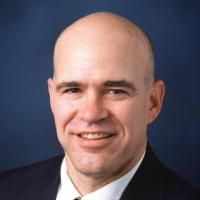Topographic variability and the influence of soil erosion on the carbon cycle
Date
2016-05-01
Journal Title
Journal ISSN
Volume Title
Repository Usage Stats
views
downloads
Citation Stats
Abstract
©2016. American Geophysical Union. All Rights Reserved. Soil erosion, particularly that caused by agriculture, is closely linked to the global carbon (C) cycle. There is a wide range of contrasting global estimates of how erosion alters soil-atmosphere C exchange. This can be partly attributed to limited understanding of how geomorphology, topography, and management practices affect erosion and oxidation of soil organic C (SOC). This work presents a physically based approach that stresses the heterogeneity at fine spatial scales of SOC erosion, SOC burial, and associated soil-atmosphere C fluxes. The Holcombe's Branch watershed, part of the Calhoun Critical Zone Observatory in South Carolina, USA, is the case study used. The site has experienced some of the most serious agricultural soil erosion in North America. We use SOC content measurements from contrasting soil profiles and estimates of SOC oxidation rates at multiple soil depths. The methodology was implemented in the tRIBS-ECO (Triangulated Irregular Network-based Real-time Integrated Basin Simulator-Erosion and Carbon Oxidation), a spatially and depth-explicit model of SOC dynamics built within an existing coupled physically based hydro-geomorphic model. According to observations from multiple soil profiles, about 32% of the original SOC content has been eroded in the study area. The results indicate that C erosion and its replacement exhibit significant topographic variation at relatively small scales (tens of meters). The episodic representation of SOC erosion reproduces the history of SOC erosion better than models that use an assumption of constant erosion in space and time. The net atmospheric C exchange at the study site is estimated to range from a maximum source of 14.5 g m−2 yr−1 to a maximum sink of −18.2 g m−2 yr−1. The small-scale complexity of C erosion and burial driven by topography exerts a strong control on the landscape's capacity to serve as a C source or a sink.
Type
Department
Description
Provenance
Subjects
Citation
Permalink
Published Version (Please cite this version)
Publication Info
Dialynas, YG, S Bastola, RL Bras, SA Billings, D Markewitz and DDB Richter (2016). Topographic variability and the influence of soil erosion on the carbon cycle. Global Biogeochemical Cycles, 30(5). pp. 644–660. 10.1002/2015GB005302 Retrieved from https://hdl.handle.net/10161/21246.
This is constructed from limited available data and may be imprecise. To cite this article, please review & use the official citation provided by the journal.
Collections
Scholars@Duke

Daniel D. Richter
Richter’s research and teaching links soils with ecosystems and the wider environment, most recently Earth scientists’ Critical Zone. He focuses on how humanity is transforming Earth’s soils from natural to human-natural systems, specifically how land-uses alter soil processes and properties on time scales of decades, centuries, and millennia. Richter's book, Understanding Soil Change (Cambridge University Press), co-authored with his former PhD student Daniel Markewitz (Professor at University of Georgia), explores a legacy of soil change across the Southern Piedmont of North America, from the acidic soils of primary hardwood forests that covered the region until 1800, through the marked transformations affected by long-cultivated cotton, to contemporary soils of rapidly growing and intensively managed pine forests. Richter and colleagues work to expand the concept of soil as the full biogeochemical weathering system of the Earth’s crust, ie, the Earth’s belowground Critical Zone, which can be tens of meters deep. The research examines decadal to millennial changes in the chemistry and cycling of soil C, N, P, Ca, K, Mg, and trace elements B, Fe, Mn, Cu, Be, Zr, and Zn across full soil profiles as deep at 30-m. Since 1988, Richter has worked at and directed the Long-Term Calhoun Soil-Ecosystem Experiment (LTSE) in the Piedmont of South Carolina, a collaborative study with the USDA Forest Service that quantifies how soils form as natural bodies and are transformed by human action, and a study that has grown to become an international model for such long-term soil and ecosystem studies. In 2005, Richter and students initiated the first comprehensive international inventory project of the world’s LTSEs, using an advanced-format website that has networked metadata from 250 LTSEs. The LTSEs project has held three workshops at Duke University, NCSU's Center for Environmental Farming Systems, and the USDA Forest Service's Calhoun Experimental Forest and Coweeta Hydrologic Laboratory, hosting representatives from Africa, Asia, Australia, Europe, and the Americas. Richter's 60-year old Long Term Calhoun Soil and Ecosystem Experiment is linked to similar experiments and platforms around the world via the ‘Long-Term Soil-Ecosystem Experiments Global Inventory’, assembled by Dan Richter, Pete Smith, and Mike Hofmockel."He is an active member of the International Commission on Stratigraphy’s Working Group on the Anthropocene. Richter has written in the peer-reviewed literature about all of these projects, and in November 2014 his soils research at the Calhoun and his soils teaching were featured in Science magazine.
Unless otherwise indicated, scholarly articles published by Duke faculty members are made available here with a CC-BY-NC (Creative Commons Attribution Non-Commercial) license, as enabled by the Duke Open Access Policy. If you wish to use the materials in ways not already permitted under CC-BY-NC, please consult the copyright owner. Other materials are made available here through the author’s grant of a non-exclusive license to make their work openly accessible.
